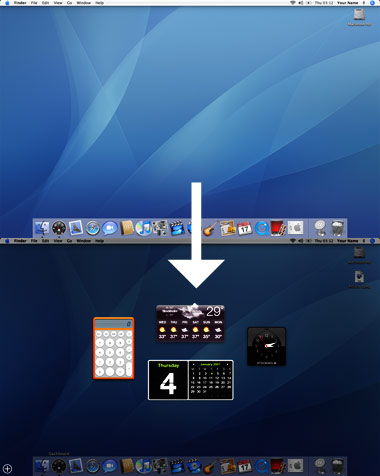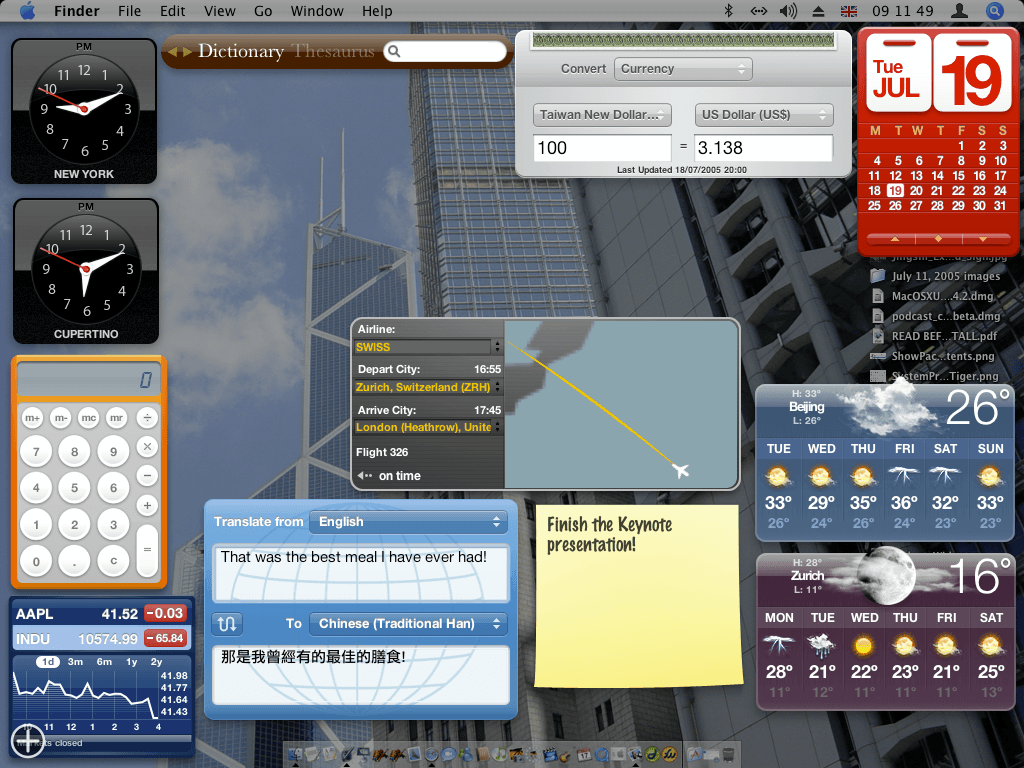

A tap on the current city name and it offers a list of recently searched locations: In the case of the Weather widget, the window flips around and displays this:Īh-ha! Here’s where it’s getting Kansas City. That’s how you get to settings and configuration. ” that has shown up over the top left corner of each active widget.The change is rather dramatic as it spreads across your entire screen, highlighting some widgets and showing all widget categories: You can see it in the first image if you look closely. The settings area is found by instead clicking on the tiny “ Edit Widgets” button on the bottom of the Control Center. It doesn’t…Ĭlose the browser window, we won’t need it. A third-party widget! But there’s a problem here: I’m in Boulder, Colorado and the Control Center is showing me the weather for Kansas City.Ī logical reaction is to click on the widget with the assumption that it brings up a settings area. Notifications show up at the very top if present, then I have the weather widget, the Screen Time widget, and the slick CleanMyMac widget.
WDGET FOR MAC MAC
Control Center you’ve hopefully already realized, is what you get when you click on the time on the very right edge of the menu bar on a modern Mac system. CHANGE LOCATION OF WEATHER FORECAST IN MAC WEATHER WIDGETįirst off, yes, “widget” is the official name for the tiny little mini-apps that run within Control Center. Turns out that specifying location is part of the “edit widget” feature.
WDGET FOR MAC UPDATE
On an iPhone or iPad, the weather widget is tied to the Weather app, so it’s easy to know that you go into the app to adjust and update desired locations to change where the widget will show current and forecast weather. Instead of having it just sit on your desktop – or menu bar – however, it is pretty nice to have it just a click away… Of new widgets has been rather glacial, however, so we do seem to be mostly stuck with the defaults, one of which is the weather widget. It mimics a similar feature in iOS, but that’s good: Why not have the Mac system steal the best features and elements of the mobile experience? The introduction Chrome has a widget on iOS but not on macOS.I’m a big fan of the new Control Center in MacOS 11, actually. A lot of apps have them if it suits their functionality but they tend to be more common on iOS than on macOS. Apps that come with a widget will probably advise it on their Mac App store page, or the product page. You cannot force an app to show a widget in the Notification Center. The point is, an app must come with its own widget. Widgets are part of apps, or some apps run mostly or entirely as widgets. Adding and removing a widget might, in rare circumstances, help. Widgets are a great way to get a quick look at live data but the widget itself needs to fetch the data and they can be slow sometimes.


Sometimes a widget just needs a little time to fetch and display information. It may rely on certain permissions or it may have problems of its own. When you’re done adding and removing widgets, click the Done button at the bottom left, or just click anywhere outside the Notification Center.Īdding widgets is fairly easy but just because you’ve added a widget doesn’t mean it will work. To remove a widget, look at the ones listed in the left panel and click the red minus button at the top left of a widget.

WDGET FOR MAC PLUS
Click the plus button next to a widget and it will be added to the Today tab in Notification Center. The Notification Center will expand and reveal a new panel with all the widgets that you can enable. Regardless of what you see, click the Edit or New button. The new button will also show you how many new widgets are available to be enabled. You may see one of two things an edit button, or a new button. Make sure you’re on the Today tab of the Notification Center. Add/remove widgets in Notification CenterĬlick the Notification Center icon at the top right of the menu bar. That said, regardless if a widget is a stock widget or added by a third-party, here’s how you can add/remove widgets in Notification Center. Users have to enable them unless they’re stock widgets which are already enabled. Of course, these widgets aren’t allowed to litter the notification center at will. Some come out-of-the-box on the operating system, others can be added by third-party apps that you install. MacOS has widgets that appear in the Notification Center.


 0 kommentar(er)
0 kommentar(er)
